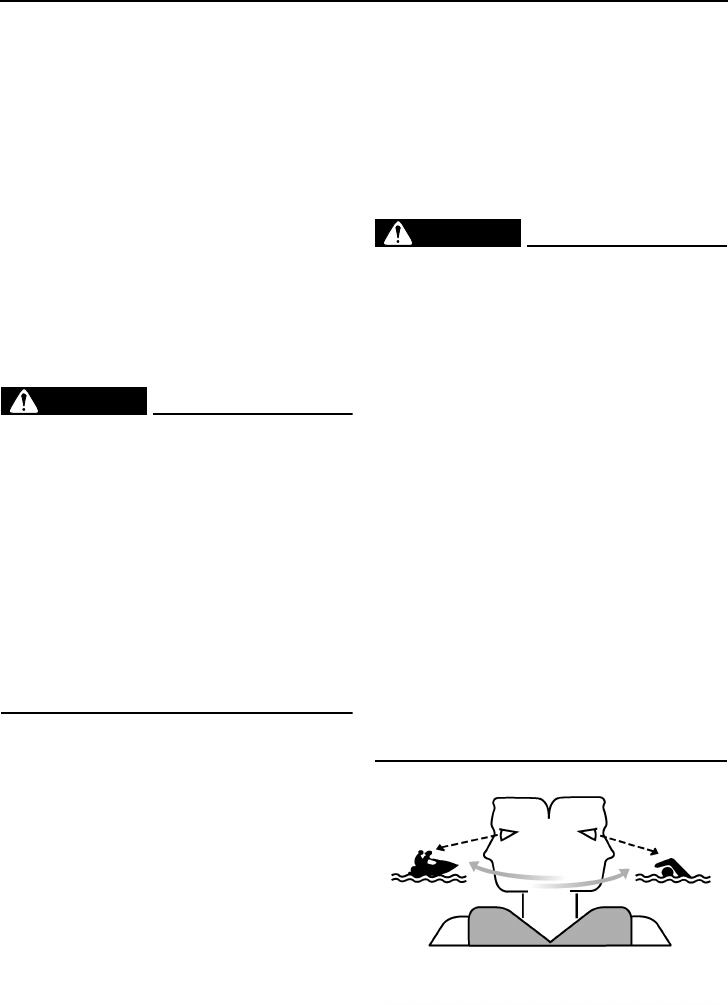
Operation
62
(subnormal body temperature) and abra-
sions.
Footwear and gloves are recommended.
Eye protection is recommended to keep wind,
water, and glare from the sun out of your eyes
while you operate your watercraft. Restraining
straps for eyewear are made which are de-
signed to float should your eyewear fall in the
water.
You should grip the handlebars firmly and
keep both feet on the floor of the footwell. Do
not attempt to ride with a passenger until your
operating skills are fully developed.
EJU33011
Riding with a passenger
WARNING
EWJ00521
● Do not apply throttle when anyone is at
the rear of the watercraft. Turn the en-
gine off or keep it at idle. Water and de-
bris exiting the jet thrust nozzle can
cause severe injury. The passenger
should not attempt to board the water-
craft if the operator is applying throttle.
● When a passenger is on board, make
sure that the passenger is holding on
firmly and has both feet on the floor of
the footwell before you start to acceler-
ate.
When a passenger is on board with the oper-
ator, the watercraft handles differently, and is
not as easy to maneuver, therefore operating
it requires a higher degree of skill. Before at-
tempting to operate the watercraft with a pas-
senger on board, the operator must practice
operating the watercraft alone enough to be
able to acquire the necessary skills.
The passenger must always wear a U.S.
Coast Guard approved PFD and a wetsuit
bottom or equivalent.
Do not give a ride to a child whose feet cannot
reach the floor of the footwell. The passenger
should hold on firmly to the operator and keep
both feet on the floor of the footwell. Never al-
low a passenger to ride in front of the opera-
tor.
EJU33081
Starting the watercraft
WARNING
EWJ00711
To avoid collisions:
● Scan constantly for people, objects, and
other watercraft. Be alert for conditions
that limit your visibility or block your vi-
sion of others.
● Operate defensively at safe speeds and
keep a safe distance away from people,
objects, and other watercraft.
● Do not follow directly behind watercraft
or other boats. Do not go near others to
spray or splash them with water. Avoid
sharp turns or other maneuvers that
make it hard for others to avoid you or
understand where you are going. Avoid
areas with submerged objects or shal-
low water.
● Take early action to avoid collisions. Re-
member, watercraft and other boats do
not have brakes. Do not release the
throttle lever when trying to steer away
from objects—you need throttle to steer.
UF2R10E0.book Page 62 Friday, October 31, 2008 9:14 AM


















